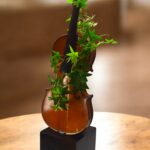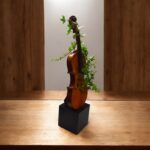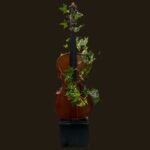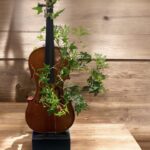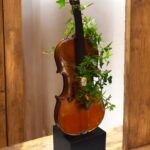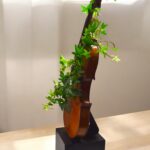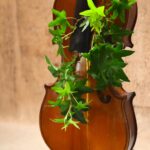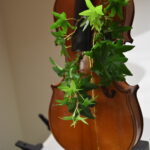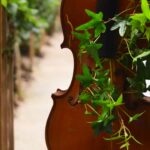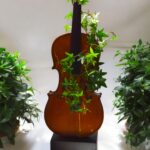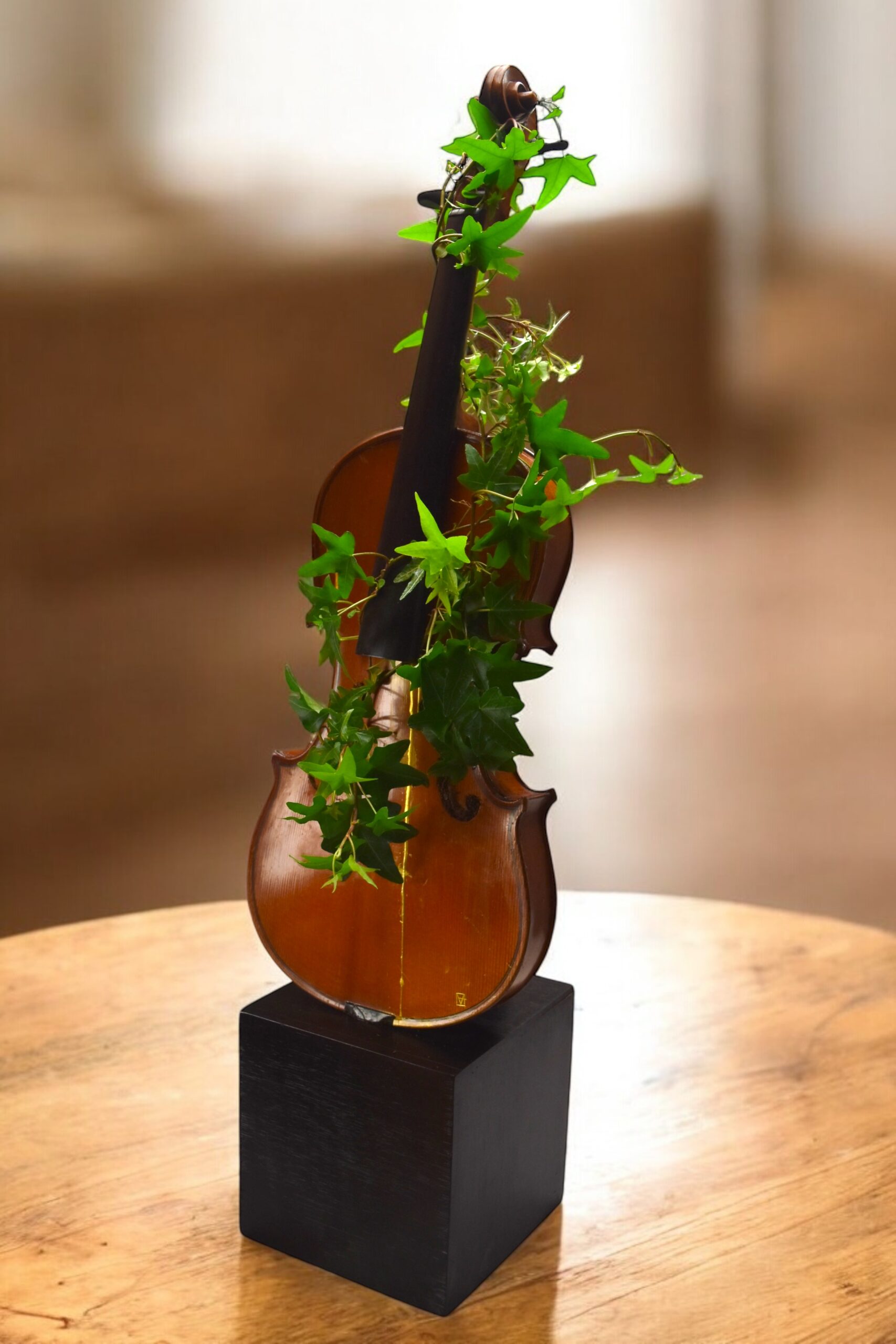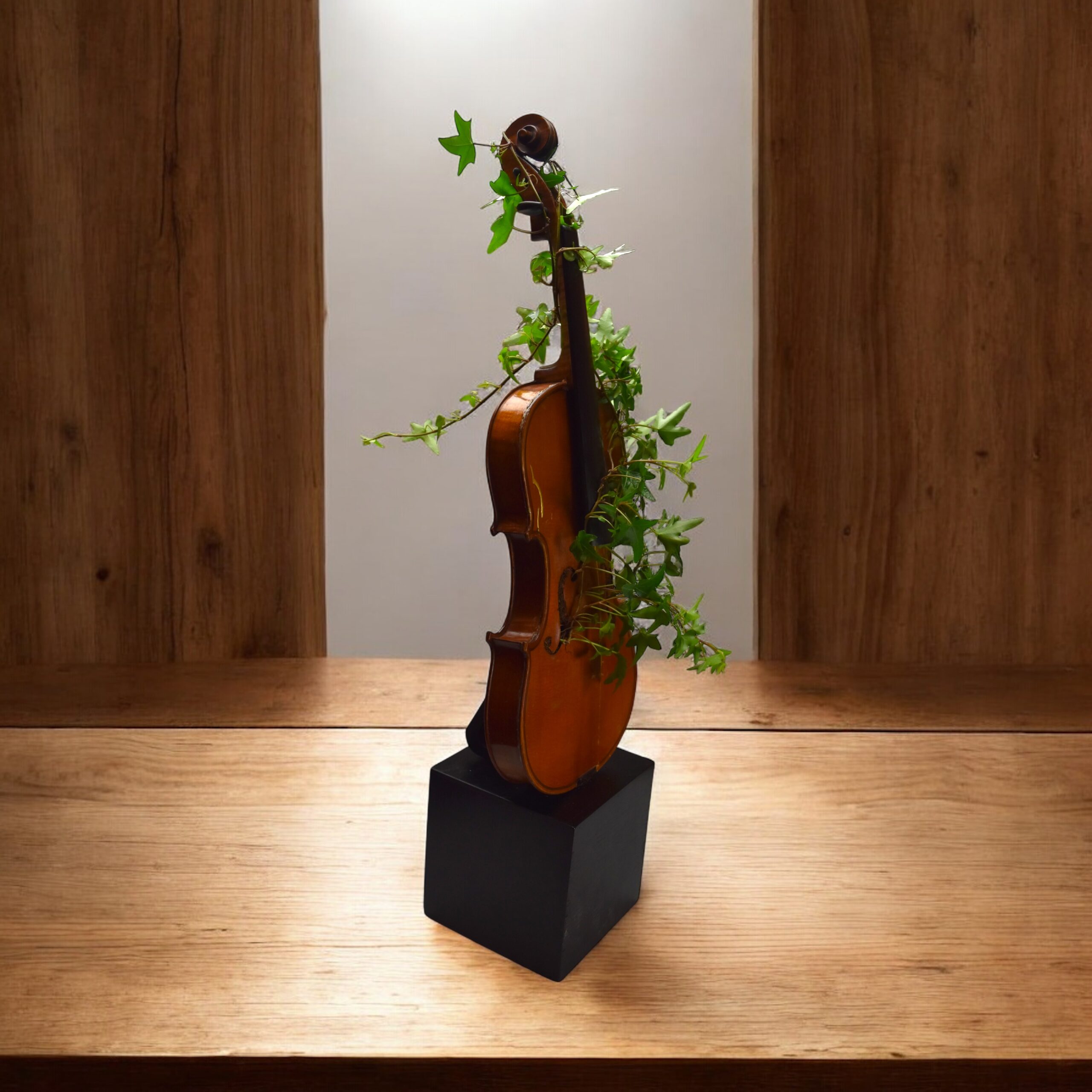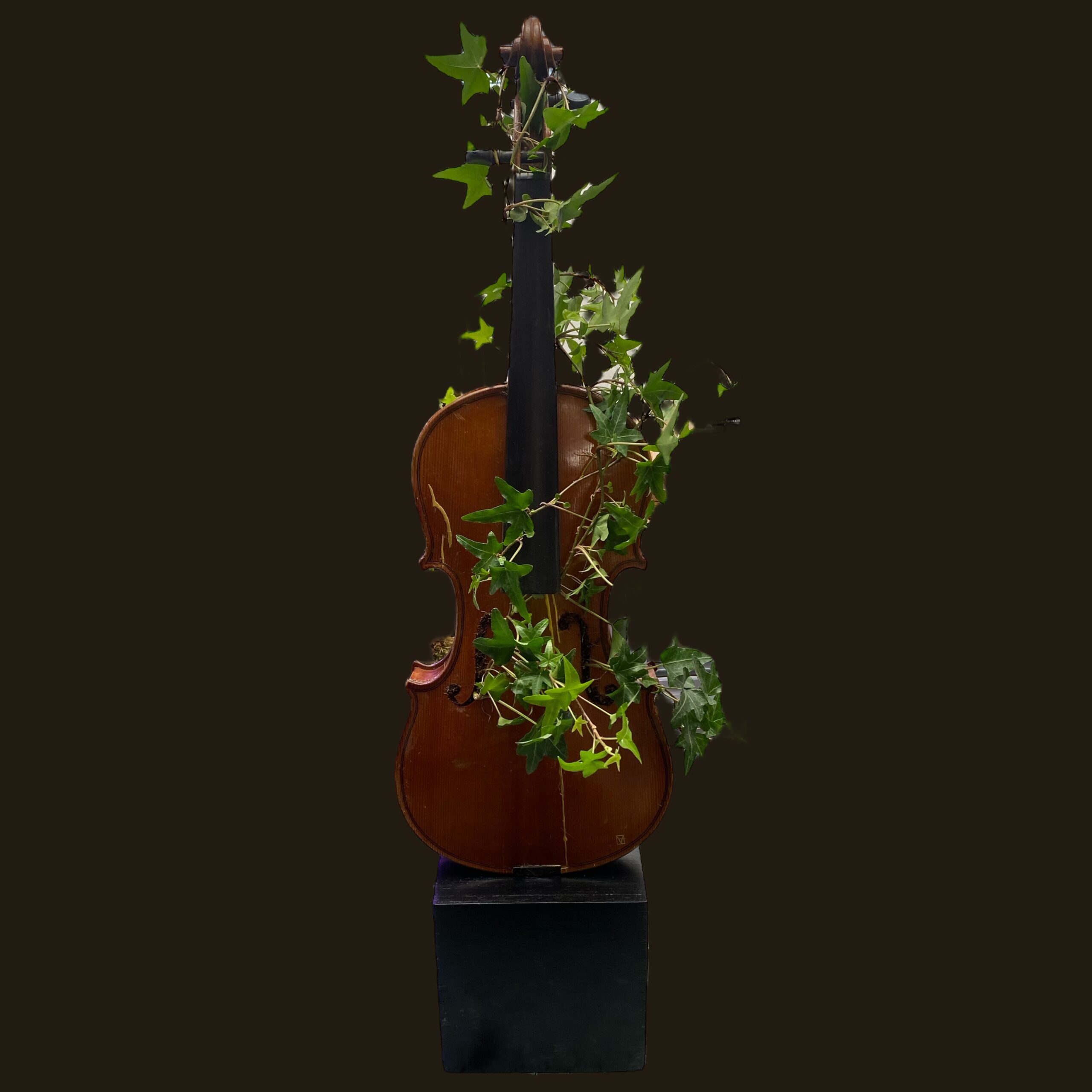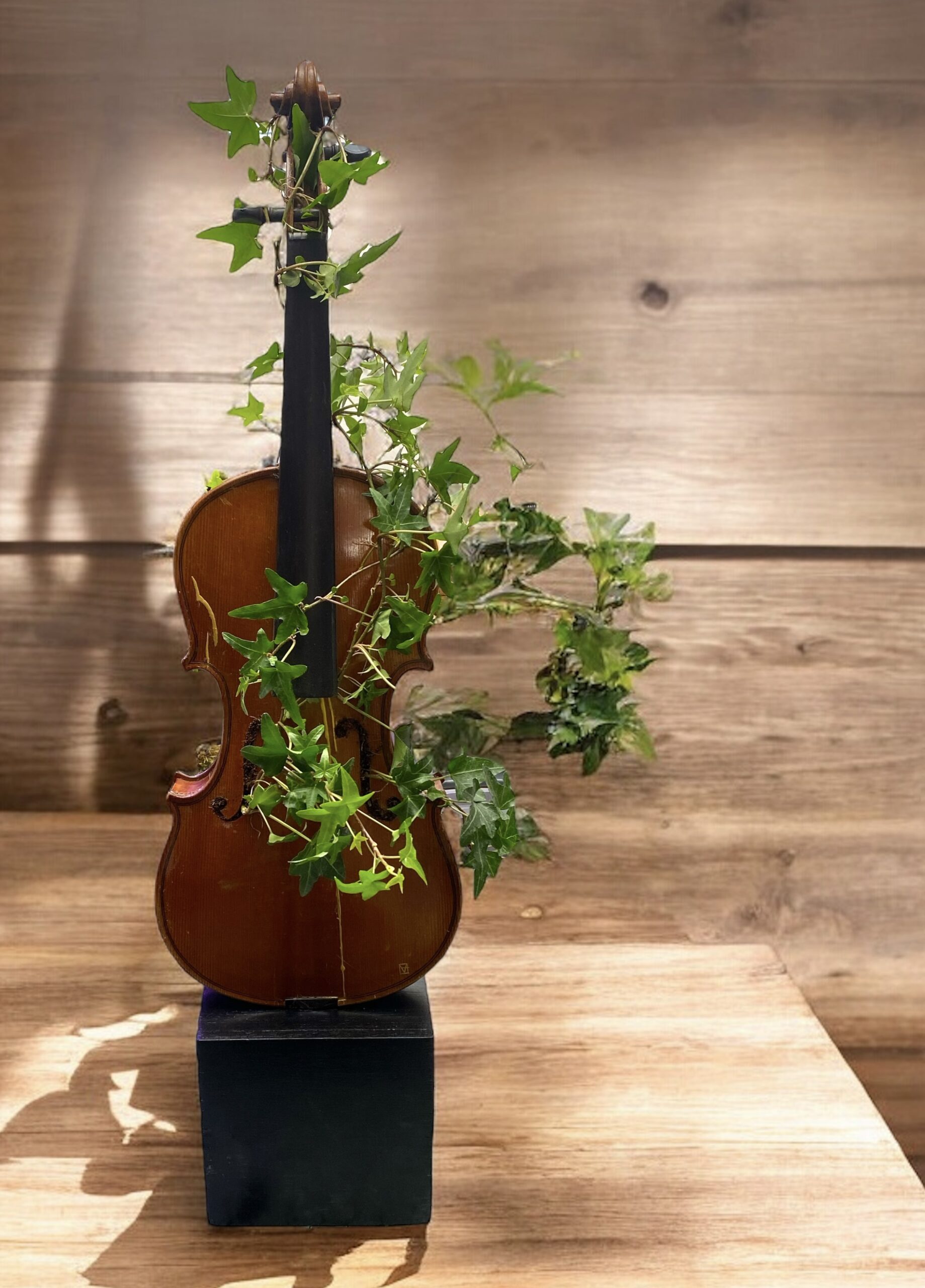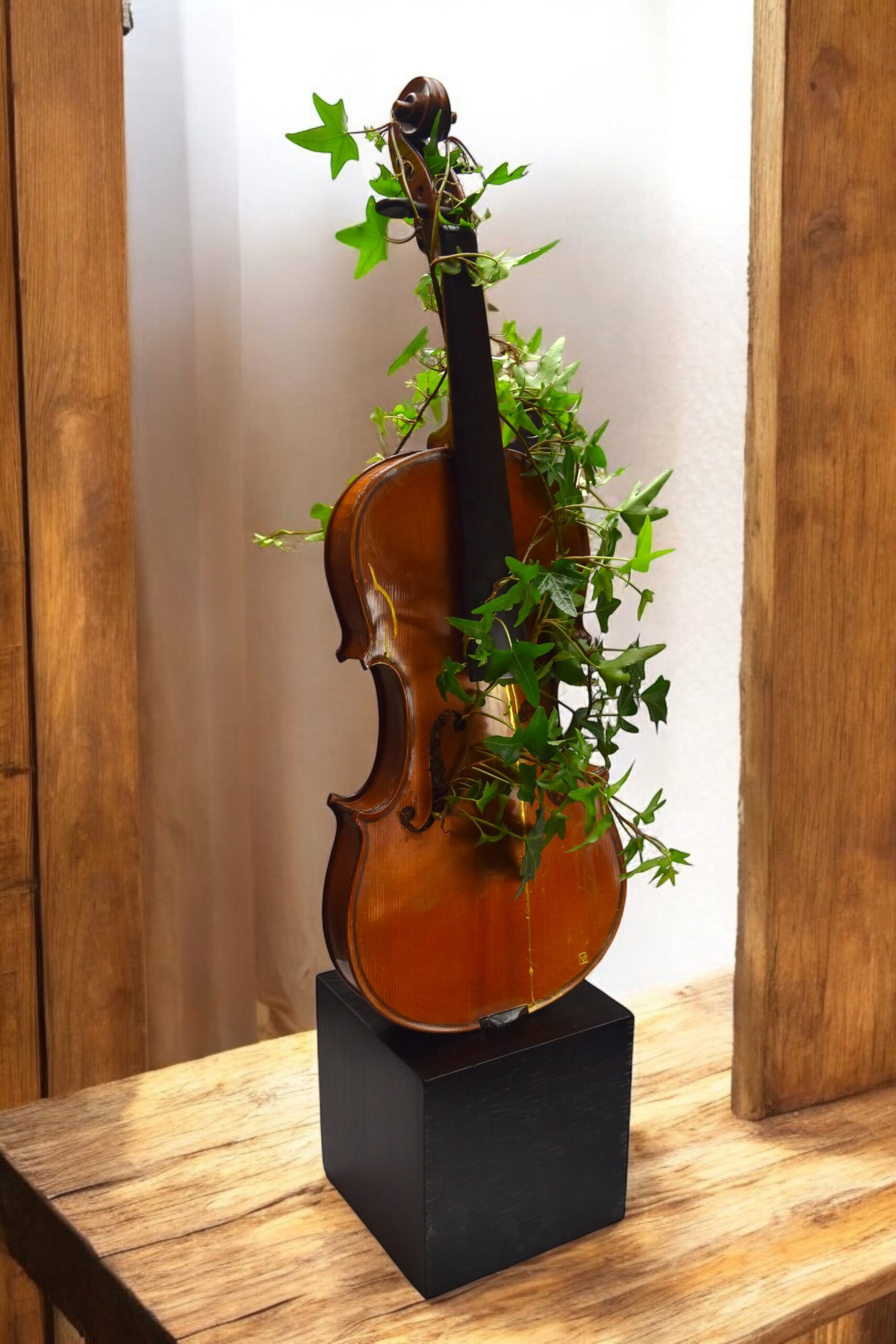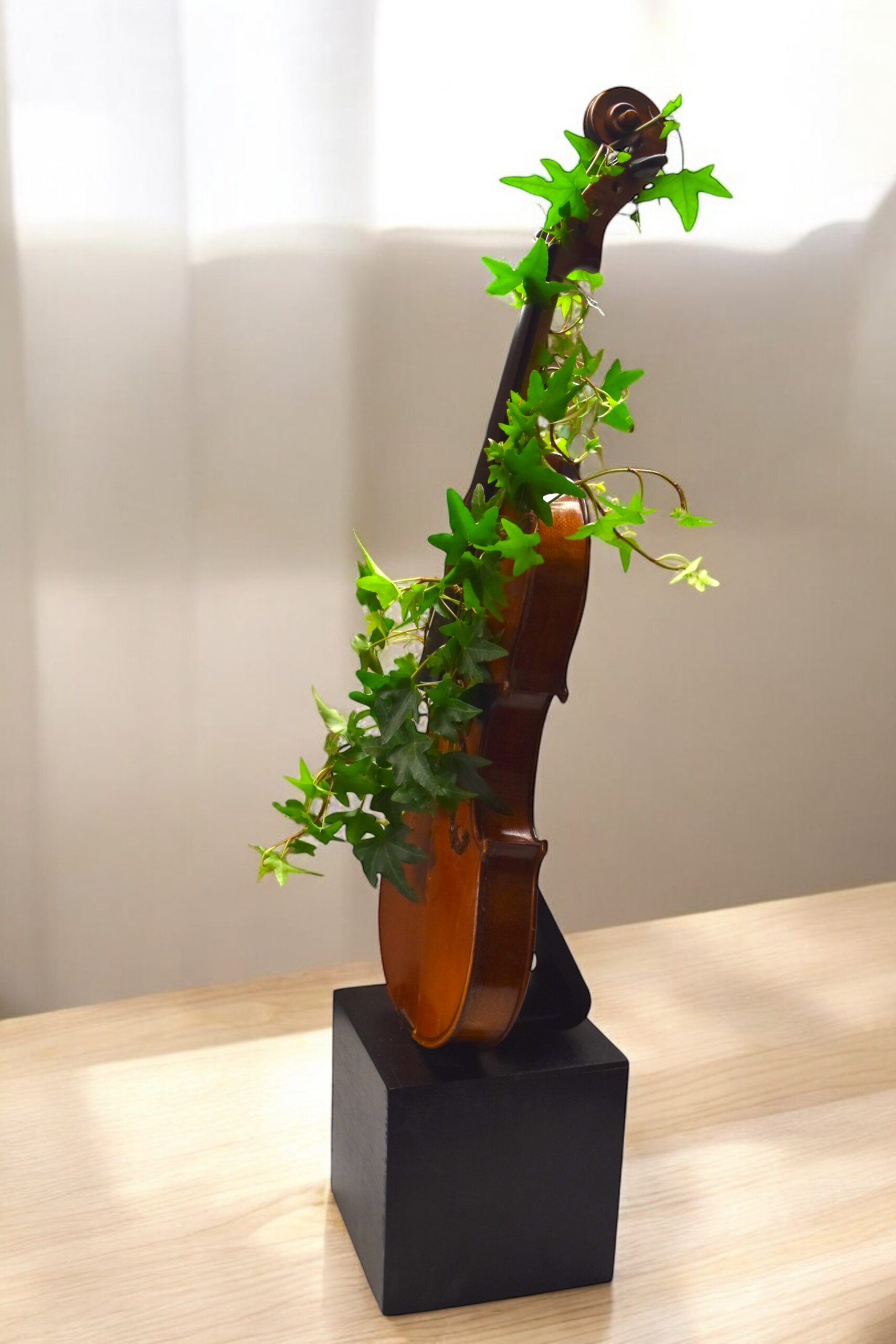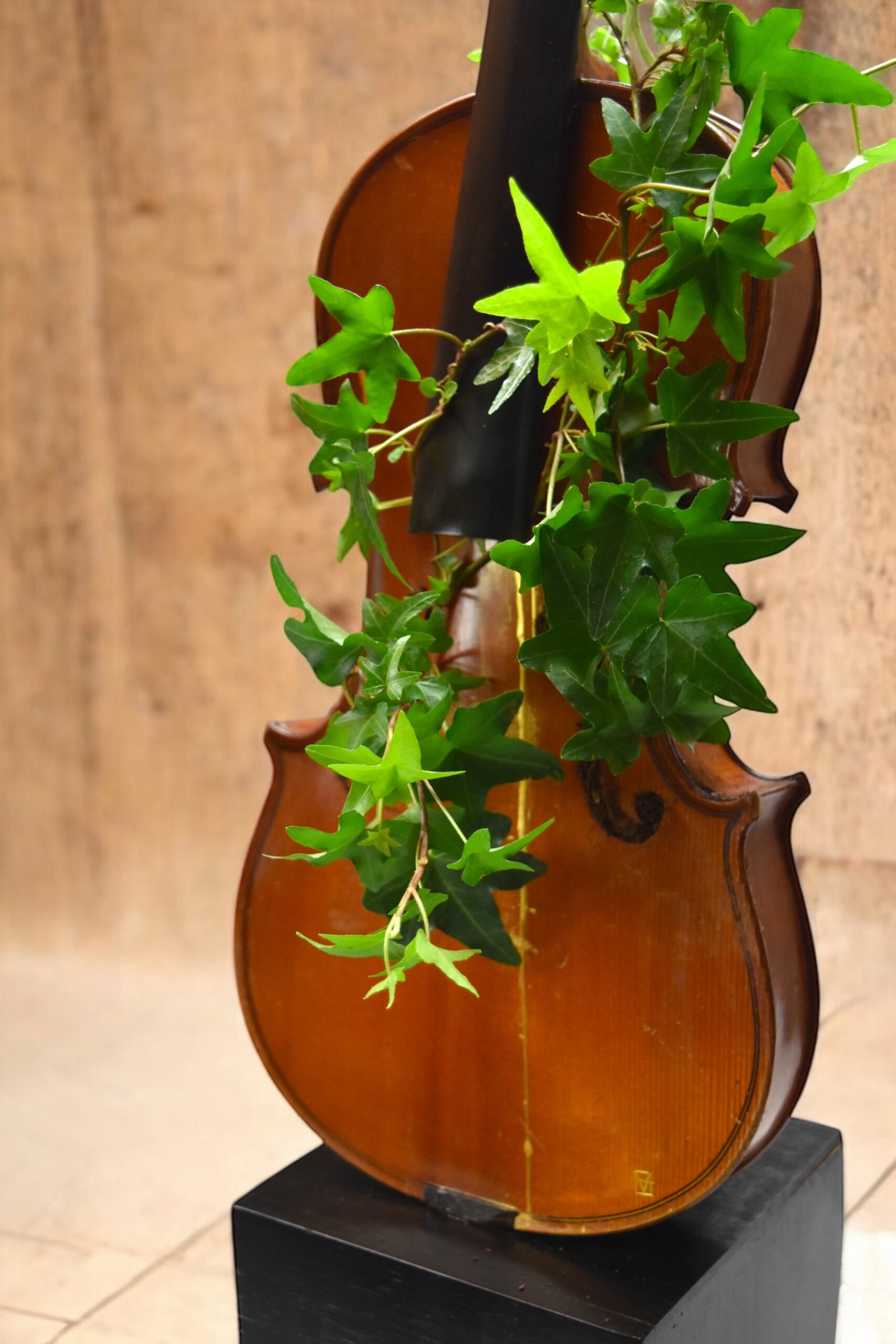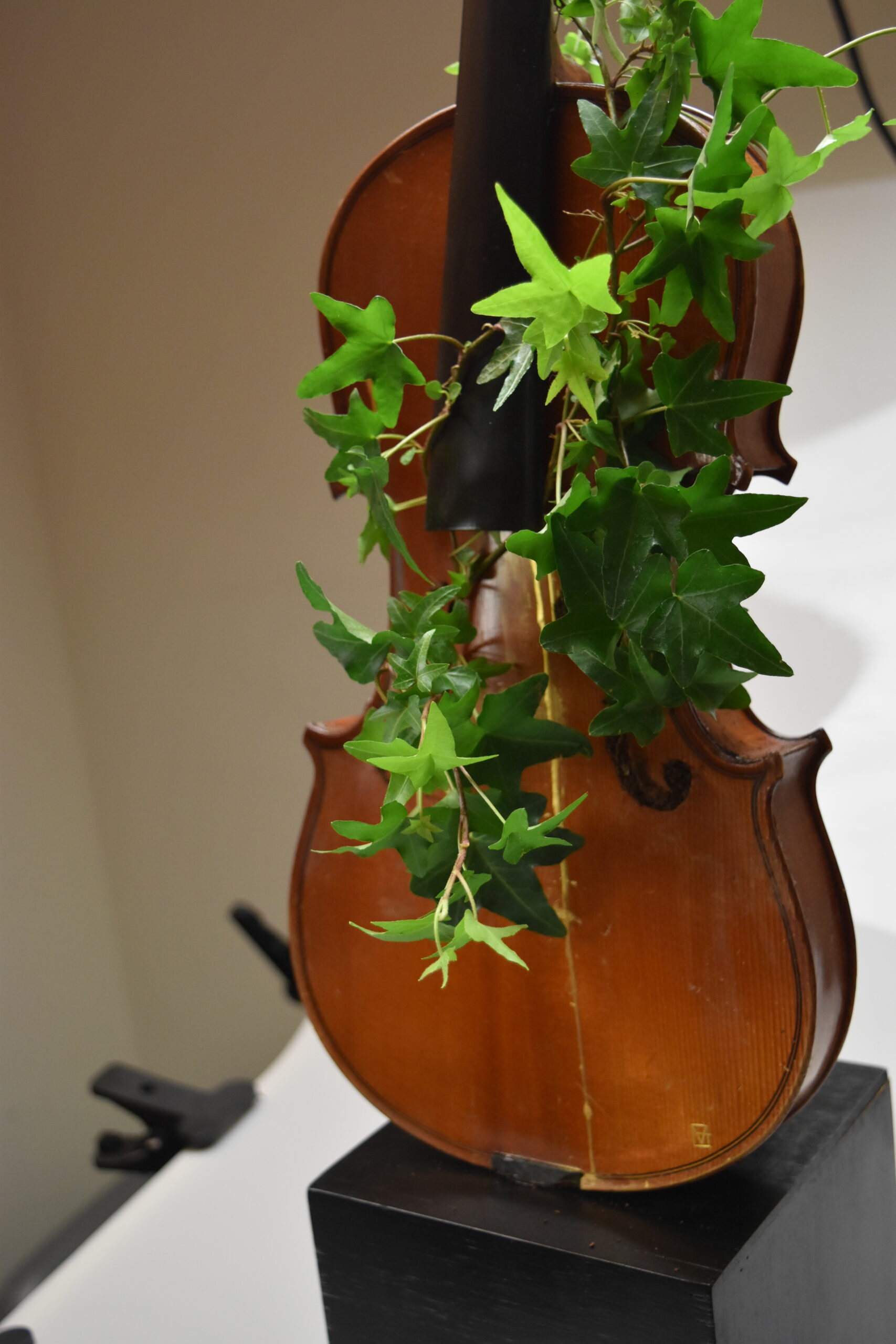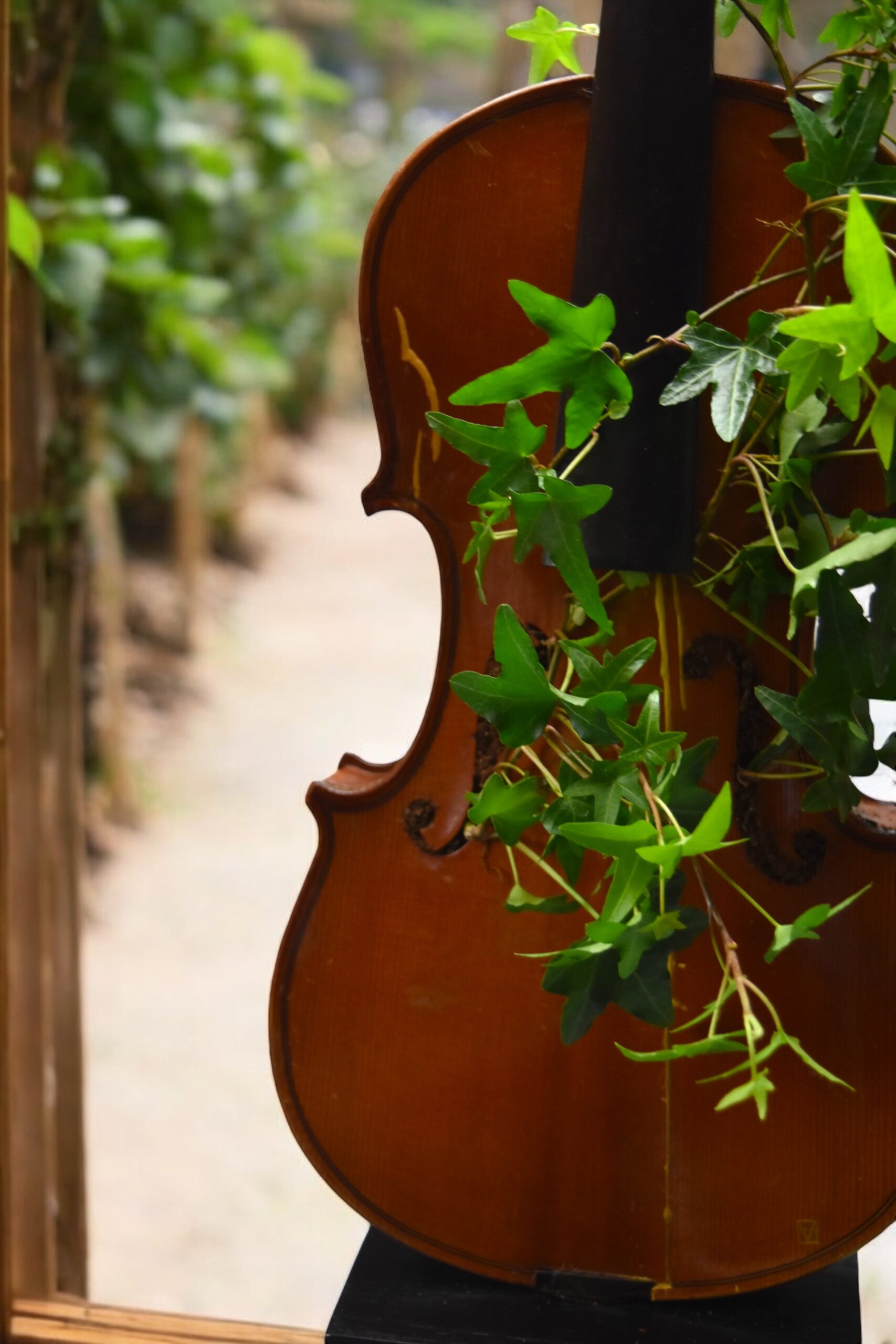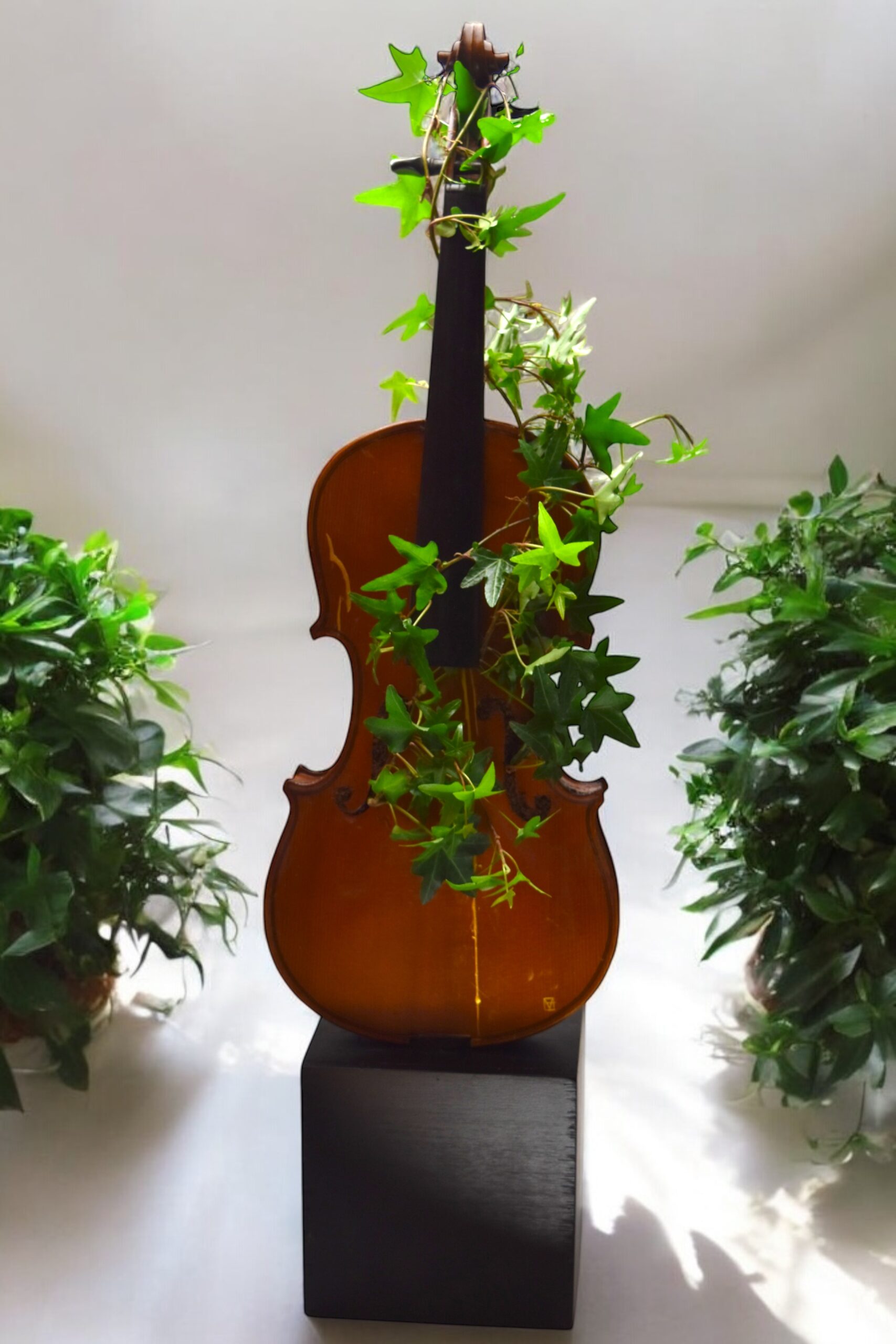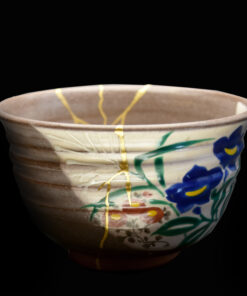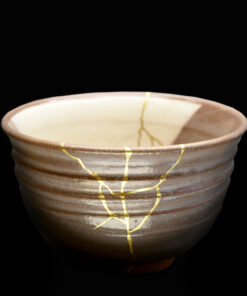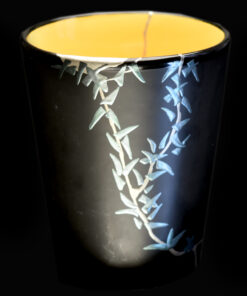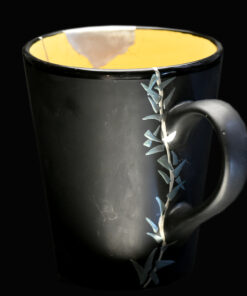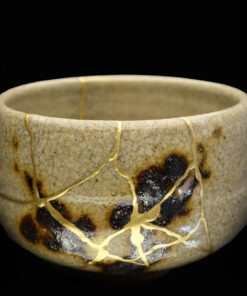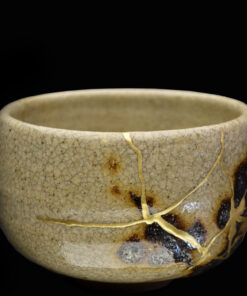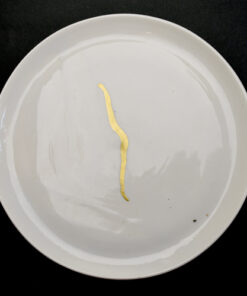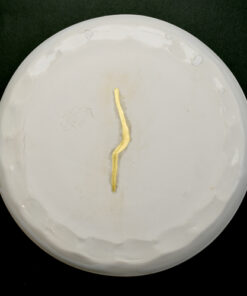Violon sculpture with kintsugi and living plants
3 500 € VAT excl.
In stock
For express shipping please contact us before purchase as prices are difficult to calculate automatically on the website.
UTSUKUSHII HAMONI (beautiful harmony, in Japanese) is an old violin restored with a cracked table, an ode to the capacity for healing and transformation. By combining the fragility of the wood, the power of music, and the precision of the artistic gesture, I hope to raise public awareness of the challenges of preserving life and hope. This violin is a metaphor for our world, where the scars of the past can be transformed into sources of renewal and harmony. It reminds us of the vital importance of life and resilience.
PRESENTATION:
The violin has a classic shape from the Mirecourt school, probably dating from the late 19th century. It evokes the warmth and richness of sound. The wood, in a deep shade, offers a smooth surface that contrasts with the brilliance of gold. The cracks repaired with kintsugi create a delicate network of golden lines that run across the violin’s table.
Kintsugi, a Japanese technique for repairing ceramics with lacquer and gold, celebrates the beauty of imperfections. In this work, the golden cracks are not only repairs but become decorative elements that highlight the object’s history. They symbolize resilience, transformation, and the beauty that is born from fragility.
Lacking strings, it is a living ivy that climbs along the neck. It brings an emotional dimension to the work, recalling that music continues even in the most difficult environments.
Water, although not visible, is omnipresent. It allowed the growth of the tree that provided the wood for the violin and continues to keep alive the ivy that wraps around the violin. Water here is a symbol of life, transformation, and cycle.
RESILIENCE AS A COMMON THREAD
- The resilience of the repaired wood: Kintsugi, the art of repairing with gold, is a powerful metaphor for resilience. The cracks, far from being signs of weakness, become decorative elements that add to the beauty of the object. They testify to a history, a journey, and remind us that trials can make us stronger.
- The resilience of man in the face of environmental challenges: Man, like wood and ivy, is capable of facing challenges and rebuilding himself. We can draw on the resilience of nature to find the resources needed to face environmental challenges.
HARMONY BETWEEN MAN AND NATURE
- Interdependence between man and nature: The work emphasizes the deep interconnection between man and his environment. The wood, which depends on man to be transformed into a violin, just as man depends on the wood to create music, symbolizes this symbiotic relationship.
- The importance of preserving biodiversity: By staging a violin, I draw attention to biodiversity and its importance for the balance of ecosystems. This work is a call to preserve this diversity, which is essential to our survival.
- Art as a vehicle for awareness: Art has the power to raise awareness and stimulate reflection. Through its beauty and simplicity, this work invites the viewer to question his relationship with nature and to become aware of the importance of preserving it.
UTSUKUSHII HAMONI, through the alliance of wood, kintsugi, and living ivy, is an invitation to celebrate the beauty of life in all its forms. It reminds us that fragility and resilience are two sides of the same coin. By showing us how art can repair what is broken and give a second life to matter, I invite the viewer to look to the future with optimism. Much more than a simple object; it is a metaphor for our world, a call to harmony between man and nature.
| Certificate of Authenticity | Provided |
|---|---|
| Color | Green |
| Materials | 24 carats Gold, Living plants, Urushi (Japanese lacquer) |
Related products
Masterpieces
Traditional Japanese Kintsugi

